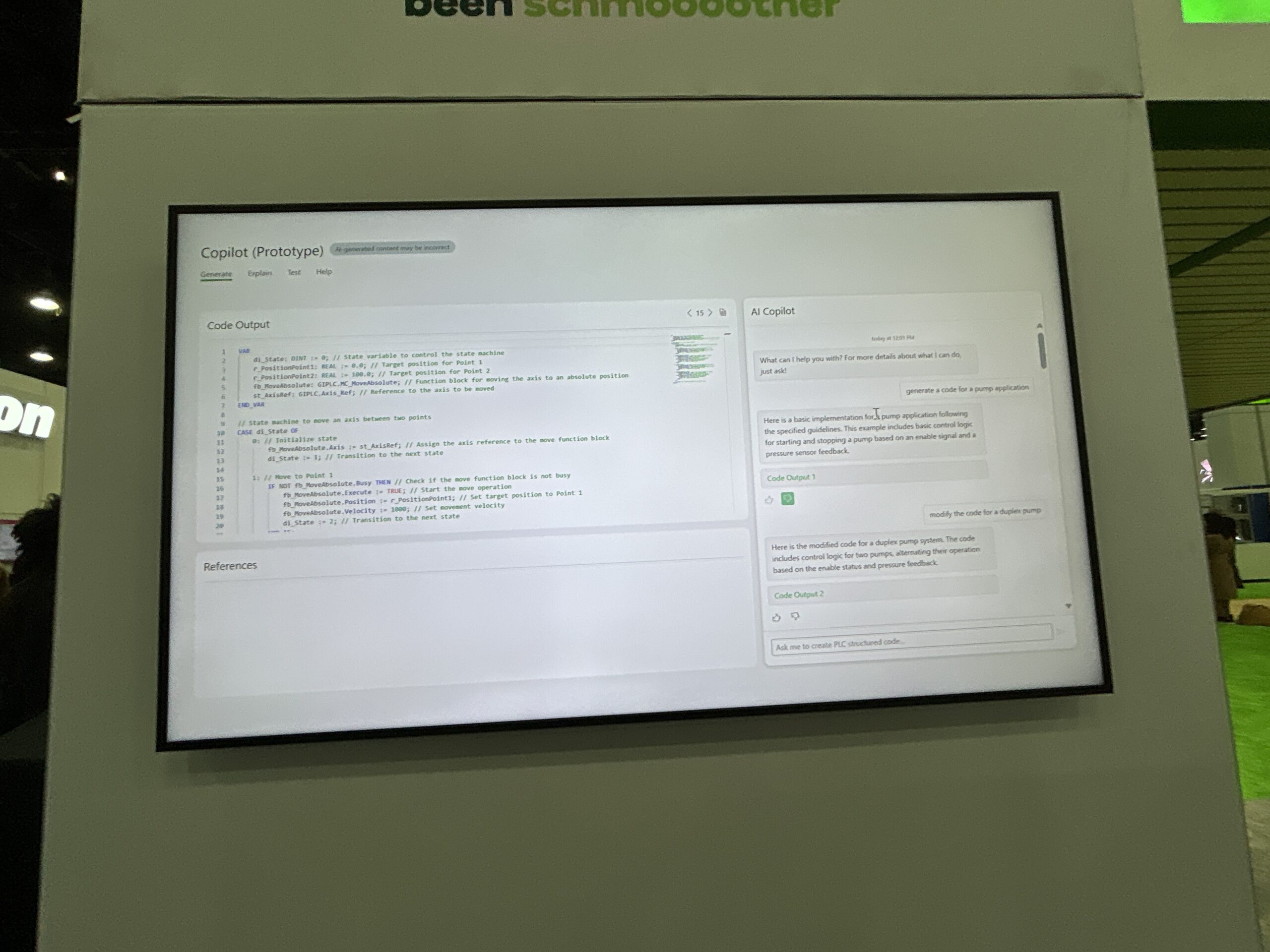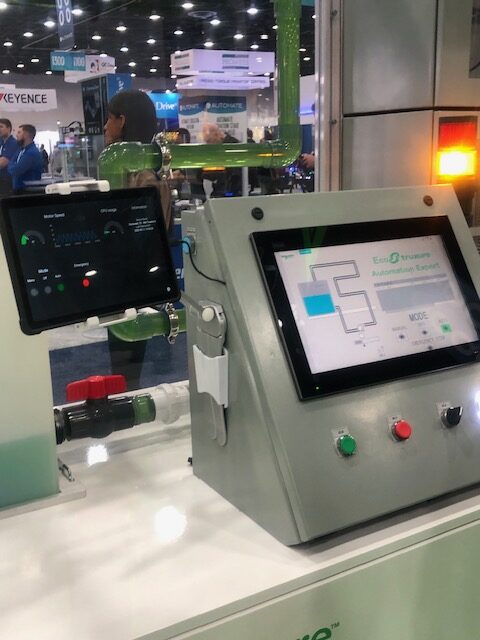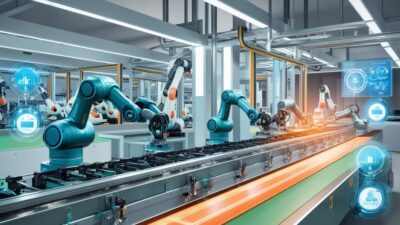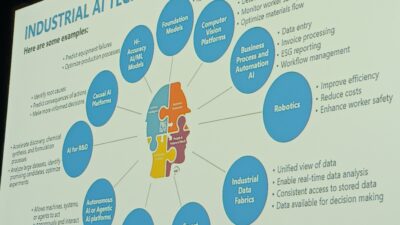
Schneider Electric rolled out software-defined automation and generative artificial intelligence (GenAI) technologies that will accelerate application development, ease machine integration, and, ultimately, aid the workforce in executing specific tasks.
During Automate 2025 in Detroit, the company introduced a prototype of its industrial copilot. Developed in collaboration with Microsoft, this copilot integrates Microsoft Azure AI Foundry — a platform for developers to build GenAI applications — with Schneider Electric’s secure industrial automation systems.
A demonstration in the Schneider Electric booth showcased copilot as a PLC code generator. In this scenario, an engineer describes what is to be controlled, such as “generate the code for a pumping application,” and copilot will automatically generate the code. It includes flow diagrams to explain how the code is put together, including details of every line to help engineers learn how to code. For those engineers writing their own code, it can test and validate it for them.
Copilot acts as an assistant but doesn’t do it all. “Coding is only one step. You have to make sure you have the right devices selected, the right memory, and the right communication capability. Once you select them, you can make sure your system is working,” said Alan Grightmire, Schneider Electric’s digital factory manager, during a demonstration at Automate.
Copilot is embedded within Schneider Electric’s products with access to code libraries. “So, this is embedded in our complete software package as a tool to help you engineer and program,” Grightmire said, noting the time savings for programming using copilot is up to 50% and about 30% for commissioning.
“[Copilot] ensures that engineers and operators can leverage Schneider Electric’s deep domain expertise to bring systems online faster and optimize them for long-term success,” said Aamir Paul, Schneider Electric’s president of North America operations, in a statement.
Copilot is currently a prototype and will be available with Schneider Electric products within the next few months. One of the products that copilot will be available on is the EcoStruxure Automation Expert platform built as an open, software-defined automation system.
Decoupling hardware and software
Software-defined automation is freeing equipment from the closed, proprietary systems of the past. Now, industrial hardware and software can work together even if they are from different suppliers.
EcoStruxure Automation Expert integrates seamlessly across various hardware and software platforms, enhancing collaboration between copilots, operators and engineers by incorporating real-time data access to provide accurate recommendations, predictive maintenance and immediate troubleshooting.

EcoStruxure Automation Expert supports a distributed architecture. Using the IEC 61499 standard, it provides a way to design an application and then distribute it to a set of physical or virtual controllers. Intelligent, single line engineering recognizes the object it is connected to and it also enables bidirectional data exchange.
The software-centric ecosystem can connect and interact with other software such as SCADA, digital twins, machine learning and analytics. Developers can also create a library of shareable and reusable apps.
Offering seamless connectivity for digital continuity simplifies operations and creates more value. Especially when it comes to AI.
“To run artificial intelligence you need standardized data,” said Andre Marino, Schneider Electric’s senior vice president, industrial automation, North American operations, in an interview. “We see the open, software-defined automation as a way to consolidate data, harmonize data and run all of your artificial intelligence modules on top of it. Otherwise, it would be super complex because you would have all this siloed [data].”
Motion, motors, robotics
Also on display at Automate, Schneider Electric showcased next-generation motion, motor, robotics, and visualization solutions.
The newly launched Modicon M660 Industrial PC (IPC) motion controller and Modicon Edge I/O NTS are combined with advanced software. The Modicon Integrated Motion System leverages edge computing, AI, and advanced control algorithms to redefine efficiency, enabling smarter decision-making and optimizing performance.
TeSys Deca Advanced transforms motor management with its SNAP IN technology. Engineered for resilience in harsh environments, this toolless contactor eliminates the need for tools and crimping. It offers seamless, error-free connections that accelerate installation by up to 75% and enable precise, ready-to-robot wiring.
The Lexium line of industrial robots, from single-axis to high-performance multi-axis machines, enhances manufacturing flexibility and productivity. These robots integrate seamlessly into unified control systems, enabling real-time synchronization, collaborative data flow, high-speed motion, and precise positioning in manufacturing and logistics. The Lexium MC12 Multi Carrier system boosts flexibility by moving, positioning or grouping objects, reducing changeover time and minimizing footprint. The Lexium Cobot range, designed for human collaboration, has been extended with an 18kg payload version and a compact controller for easy integration into various setups. The new Lexium SCARA, an ultra-compact, high-speed robot for pick-and-place tasks, completes the Lexium robots family.
AVEVA Enterprise Visualization provides a real-time overview of operations across dispersed assets, integrating data from multiple sources and software products into a tailored dashboard. Whether focusing on productivity levels, production quality, sustainability or maintenance project progress, it offers the data for informed decision-making with a centralized view of process operations.



